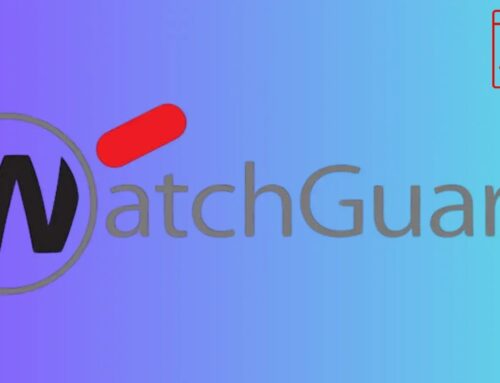
Microsoft Windows Vulnerability Exploited to Deploy PipeMagic RansomExx Malware
The digital frontier of cybersecurity is a relentless battleground, demanding constant vigilance. Rarely does a week pass without a new, sophisticated threat emerging to challenge the defenses of organizations worldwide. This is particularly true when nation-state actors or highly organized criminal syndicates weaponize zero-day vulnerabilities in widely adopted software. Recently, cybersecurity researchers unveiled critical insights into a disturbing campaign where a now-patched vulnerability in Microsoft Windows was actively exploited to deploy the insidious PipeMagic malware, ultimately leading to RansomExx ransomware attacks. Understanding the mechanics of such exploits is paramount for every IT professional and security analyst aiming to fortify their digital infrastructure.
The PipeMagic RansomExx Campaign: An Overview
Cybersecurity researchers have meticulously analyzed and brought to light the tactics, techniques, and procedures (TTPs) employed by threat actors leveraging a critical flaw within the Microsoft Windows operating system. This exploitation facilitated the deployment of PipeMagic, a precursor malware designed to enable the subsequent execution of RansomExx ransomware. This campaign underscores the persistent threat posed by unpatched vulnerabilities and the rapid weaponization capabilities of sophisticated adversaries.
CVE-2025-29824: The Windows CLFS Privilege Escalation
At the heart of these attacks lies the exploitation of CVE-2025-29824, a critical privilege escalation vulnerability impacting the Windows Common Log File System (CLFS). Discovered and subsequently patched by Microsoft in April 2025, this flaw allowed attackers to elevate their privileges on compromised systems. Privilege escalation vulnerabilities are particularly dangerous as they enable lower-privileged malicious code to gain administrative or system-level access, effectively taking full control of a device. In the context of ransomware attacks, this elevated access is crucial for disabling security software, encrypting files, and moving laterally within a network.
Understanding PipeMagic and RansomExx
PipeMagic serves as a critical component in this attack chain. While not the final ransomware payload, its design intent is to lay the groundwork for the successful deployment and execution of RansomExx. This often involves downloading additional malicious components, establishing persistence mechanisms, or hindering defensive measures. Its name likely alludes to its use of named pipes for inter-process communication or other stealthy operations.
RansomExx (also known as Defray777) is a sophisticated and highly destructive ransomware strain known for its targeted attacks against large organizations. Unlike broad, indiscriminate campaigns, RansomExx operators typically engage in comprehensive network reconnaissance, exfiltrate sensitive data before encryption (double extortion), and utilize powerful encryption algorithms to maximize impact. Its deployment following a successful privilege escalation via CVE-2025-29824 illustrates a planned and deliberate attack methodology.
Attack Chain and Exploitation Flow
The typical attack flow observed in these campaigns initiated with a means of initial access, such as phishing or exploiting an exposed service. Once initial access was gained, the threat actors would then leverage CVE-2025-29824 to elevate their privileges to a high administrative level. This elevated access was then used to:
- Deploy the PipeMagic malware.
- Execute PipeMagic to prepare the system for ransomware.
- Download and execute the RansomExx payload.
- Perform data exfiltration (prior to encryption, in line with double extortion tactics).
- Encrypt critical files and systems, rendering them inaccessible.
- Leave a ransom note demanding payment for decryption.
This sequence highlights the critical role of privilege escalation in achieving the adversary’s ultimate objective: widespread data encryption and extortion.
Remediation Actions and Protective Measures
Given the severity and impact of privilege escalation vulnerabilities and ransomware attacks, immediate and thorough remediation is essential. Here are the key actions organizations must take:
Immediate Patching:
- Apply the April 2025 Windows Updates: Microsoft addressed CVE-2025-29824 in its April 2025 Patch Tuesday release. Ensure all Windows systems are fully updated to mitigate this specific vulnerability. Prioritize mission-critical systems and internet-facing assets.
Proactive Security Hardening:
- Principle of Least Privilege: Enforce strict adherence to the principle of least privilege across all user accounts and applications. Limit administrative access to only those who absolutely require it for their job functions.
- Endpoint Detection and Response (EDR): Deploy and meticulously configure EDR solutions to monitor endpoints for suspicious activity, including privilege escalation attempts, unusual file modifications, and network connections.
- Network Segmentation: Implement robust network segmentation to isolate critical systems and sensitive data. This limits the lateral movement of attackers even if they manage to compromise an initial endpoint.
- Multi-Factor Authentication (MFA): Mandate MFA for all user accounts, especially for administrative access, VPNs, and cloud services. MFA significantly reduces the risk of credential-based attacks.
- Regular Backups and Recovery Plans: Maintain immutable, offsite backups of all critical data. Regularly test backup restoration procedures to ensure business continuity in the event of a successful ransomware attack.
- Security Awareness Training: Educate employees about phishing, social engineering, and the importance of reporting suspicious emails or activities. A well-informed workforce is your first line of defense.
- Vulnerability Management Program: Establish a robust vulnerability management program that includes regular scanning, prioritization, and patching of all software and hardware assets.
Relevant Security Tools
| Tool Name | Purpose | Link |
|---|---|---|
| Microsoft Defender for Endpoint | EDR, vulnerability management, threat protection across endpoints. | Learn More |
| Tenable Nessus | Vulnerability scanning and assessment for comprehensive asset visibility. | Learn More |
| CrowdStrike Falcon Insight | Advanced EDR and threat intelligence for rapid detection and response. | Learn More |
| Veeam Backup & Replication | Data backup, recovery, and ransomware protection for virtual, physical, and cloud. | Learn More |
Key Takeaways for Cybersecurity Professionals
The exploitation of CVE-2025-29824 to deploy PipeMagic and RansomExx serves as a stark reminder of several immutable truths in cybersecurity:
- Patching is Non-Negotiable: Timely application of security updates remains one of the most effective defenses against known vulnerabilities.
- Privilege Escalation is a Critical Threat: Adversaries consistently seek ways to elevate privileges; mitigating these opportunities is paramount.
- Ransomware Evolves: Ransomware threat actors are sophisticated, utilizing custom malware (like PipeMagic) and advanced TTPs to achieve their objectives.
- Layered Security is Essential: No single control is sufficient. A layered defense-in-depth strategy, combining technical controls, strong policies, and user awareness, is the only way to build resilience.
Constant vigilance, coupled with a proactive and holistic security posture, remains the most effective strategy against these persistent and evolving threats.





